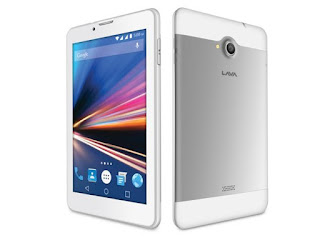Got hundreds of Facebook friends you hardly know?
Now
is a good time to do some digital cleanup, while the year is still
fresh. Review your security and privacy settings, and make sure those
casual acquaintances you met at a bar eons ago aren't still getting the
most intimate details of your life. Get rid of games and apps that might
have latched onto your account years ago, but that you no longer use.
Here are six cleanup tips:
1) Secure your accountYou've
doubtless heard you should have a strong password. It's especially
important for email and social-networking accounts because so much of
your digital life revolves around them. Plus, many other services let
you log on using your
Facebook account, so if that gets compromised, so will your other accounts.
Because
passwords are tough to manage, it's best not to rely solely on them.
Turn on what Facebook calls Login Approvals. It's in the account
settings under
Security. After you do so, you're asked
for confirmation -- entering a special number sent to your phone -- when
signing on from a new device.
Unless you switch devices often,
this is something you set up once and forget about. And no one else can
log in with your password unless they also have your phone and that
special number.
2) Review your privacy settingsFacebook
offers a series of quick privacy "shortcuts." On desktops and laptops,
look for the small padlock on the upper right corner of the browser. On
Apple and Android devices, access shortcuts through the menu -- the
three horizontal bars.
The key shortcut is
Who can see my stuff ?
See whether you've been inadvertently broadcasting your musings to the
entire Facebook community. You'll probably want to at least limit
sharing to
Friends rather than
Public,
though you can customize that further to exclude certain individuals or
groups -- such as co-workers, acquaintances or grandparents. When
sharing, remember that less is more.
While you're at it, check
Timeline and Tagging
in your account settings from a PC or mobile. You can insist on
approving posts that people tag you in. Note that this is limited to
what appears on your personal timeline; if Mary tags you in a post,
Mary's friends will still see it regardless of your settings. That
includes friends you may have in common with her.
If you're on a
desktop or laptop, Facebook has a Privacy Checkup tool to review your
settings. Look for that padlock. This tool is coming soon to mobile.
3) Make enemies ... or at least unfriend somePurge friends you're no longer in touch with. If you think "unfriending" is too mean, add them to an
Acquaintances or
Restricted
list instead. "Acquaintances" means they won't show up in your news
feed as often, though they'll still have full access to any posts you
distribute to your friends. "Restricted" means they'll only see posts
you mark as public. Either is effectively a way to unfriend someone
without dropping any clues you've done so.
You can also create
custom lists, such as "college friends" or "family." This is great for
oversharing with those who'll appreciate it, while not annoying everyone
else you know and putting yourself in danger of becoming an
"acquaintance" yourself. You can create lists on a traditional PC by
hitting
More next to
Friends to the
left of your news feed. Individuals can be in multiple groups.
Capabilities are limited on mobile devices, although changes you make on
the PC will appear on your phone or tablet.
4) Watch those appsPerhaps
someone invited you to play a game a few years ago. You tried it a few
weeks and moved on, yet the app is still getting access to your data. Or
perhaps you've used Facebook to log onto a service you no longer use,
such as one to track the 2014 Winter Olympics. It's time to sign out. If
you're not sure you still use it, drop it anyway. You can always sign
on again.
The Privacy Checkup tool on PCs will review apps for you automatically. On mobile devices, look for
Apps in the account settings (not
Apps in the main menu).
A
related option is the Security Checkup tool. It's an easy way to log
out of Facebook on devices you rarely use. You can also enable alerts
when someone tries to sign on from a new device or browser. To run this,
go to
http://facebook.com/securitycheckup on a PC. On the Android app, you can search for
security checkup in the Help Center. On iPhones and iPads, you'll have to find the options individually in the account settings under
Security.
5) Control your dataYou can exert some influence over whose posts you see more or less often by going to
News Feeds Preferences.
The setting is on the top right on browsers and Android apps and on the
lower right on iPhones. Here, you can select friends who'll always show
up on top, or hide someone's posts completely.
Finally, if you're
worried about data usage, you can stop videos in your news feeds from
playing automatically. On Android, go to
Autoplay in the
App Settings. On iPhones, it's in the account settings under
Videos and Photos.
6) Plan AheadTwo settings might eliminate grief later in life ... or death.
In
the security settings, you can designate certain friends as trusted
contacts. They'll have power to help you if you get locked out of your
account for some reason. You can also designate a
Legacy Contact
-- a family member or close friend who'd serve as your administrator
should you, um, make your last status update (as in, ever). They won't
be able to post on your behalf or see your messages, but they'll be able
to respond to new friend requests and take a few additional actions on
your deceased behalf.






















